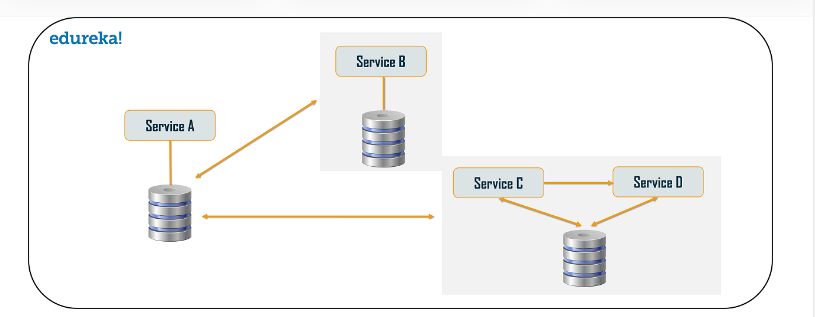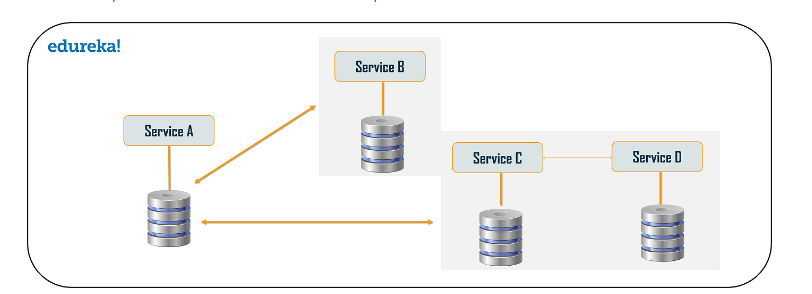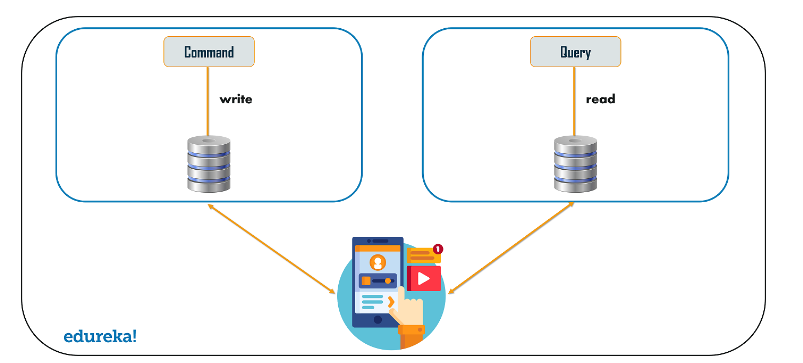- Aggregator
- API Gateway
- Chained or Chain of Responsibility
- Asynchronous Messaging
- Database or Shared Data
- Event Sourcing
- Branch
- Command Query Responsibility Segregator
- Circuit Breaker
- Decomposition
Aggregator
Aggregator is a basic web page which invokes various services to get the required information or achieve the required functionality.
The Aggregate Design Pattern is based on the DRY principle. Based on this principle, you can abstract the logic into a composite microservices and aggregate that particular business logic into one service.
So, for example, if you consider two services: Service A and B, then you can individually scale these services simultaneously by providing the data to the composite microservice.

API Gateway
API Gateway also acts as the entry point for all the microservices and creates fine-grained APIs’ for different types of clients.
With the help of the API Gateway design pattern, the API gateways can convert the protocol request from one type to other. Similarly, it can also offload the authentication/authorization responsibility of the microservice.
So, once the client sends a request, these requests are passed to the API Gateway which acts as an entry point to forward the clients’ requests to the appropriate microservices. Then, with the help of the load balancer, the load of the request is handled and the request is sent to the respective services.

Chained or Chain of Responsibility
Chained or Chain of Responsibility Design Patterns produces a single output which is a combination of multiple chained outputs. So, if you have three services lined up in a chain, then, the request from the client is first received by Service A. Then, this service communicates with the next Service B and collects data. Finally, the second service communicates with the third service to generate the consolidated output.
One more important aspect which you need to understand, is that the request from Service A to Service B may look different from Service B to Service C. Similarly the response from Service C to Service B may look completely different from Service B to Service A.

Asynchronous Messaging
In this type of microservices design pattern, all the services can communicate with each other, but they do not have to communicate with each other sequentially. So, if you consider 3 services: Service A, Service B, and Service C. The request from the client can be directly sent to the Service C and Service B simultaneously. These requests will be in a queue. Apart from this, the request can also be sent to Service A whose response need not have to be sent to the same service through which request has come.

Database or Shared Data
For every application, there is humongous amount of data present. So, when we break down an application from its monolithic architecture to microservices, it is very important to note that each microservice has sufficient amount of data to process a request. So, either the system can have a database per each service or it can have shared database per service. You can use database per service and shared database per service to solve various problems.
PROBLEMS ARE:-
- Duplication of data and inconsistency
- Different services have different kinds of storage requirements
- Few business transactions can query the data, with multiple services
- De-normalization of data

Event Sourcing
The event sourcing design pattern creates events regarding the changes in the application state. Also, these events are stored as a sequence of events to help the developers track which change was made when.
So, with the help of this, you can always adjust the application state to cope up with the past changes. You can also query these events, for any data change and simultaneously publish these events from the event store. Once the events are published, you can see the changes of the application state on the presentation layer.

Branch
Branch microservice design pattern is a design pattern in which you can simultaneously process the requests and responses from two or more independent microservices.
the request is not passed in a sequence, but the request is passed to two or more mutually exclusive microservices chains. This design pattern extends the Aggregator design pattern and provides the flexibility to produce responses from multiple chains or single chain

Command Query Responsibility Segregator
According to this pattern, the application will be divided into two parts: Command and Query. The command part will handle all the requests related to CREATE, UPDATE, DELETE while the query part will take care of the materialized views. The materialized views are updated through a sequence of events which are creating using the event source pattern

Circuit Breaker
the Circuit Breaker design pattern is used to stop the process of request and response if a service is not working. So, for example, let’s say a client is sending a request to retrieve data from multiple services. But, due to some issues, one of the services is down. Now, there are mainly two problems you will face:
First, since the client will not have any knowledge about a particular service being down, the request will be continuously sent to that service.
Second problem is that the network resources will be exhausted with low performance and bad user experience.

Decomposition
With the help of this pattern, either you can decompose an application based on business capability or on based on the sub-domains. For example, if you consider an e-commerce application, then you can have separate services for orders, payment, customers, products if you decompose by business capability.